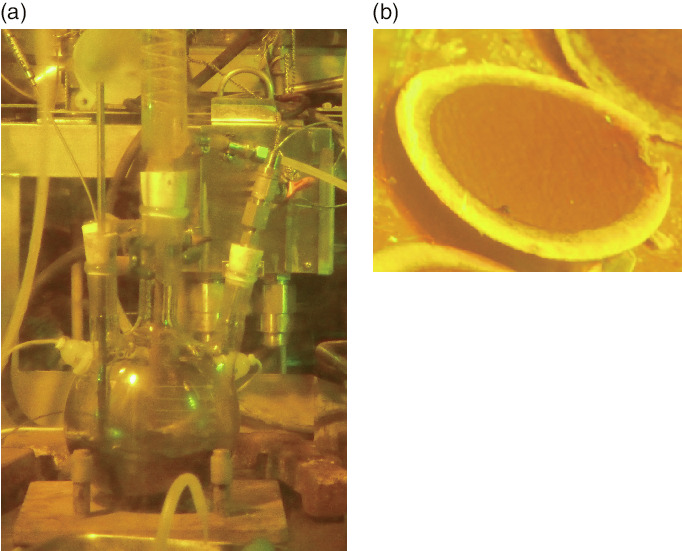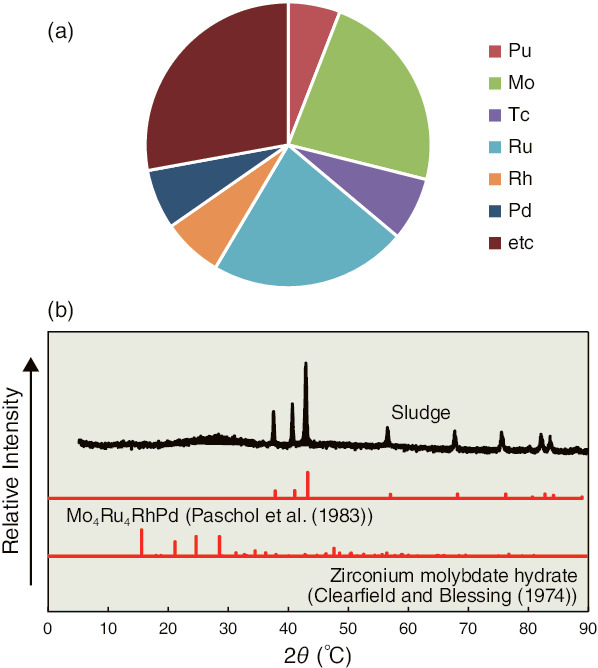
Fig.8-26 (a) Appearance of dissolving fuels and (b) filtrated residues

Fig.8-27 (a) Chemical compositions of sludge and (b) X-ray diffraction patterns
Spent fuels which are irradiated by a nuclear reactor (irradiated fuels) are reprocessed to recover uranium (U) and plutonium (Pu). During reprocessing, fuels are dissolved with nitric acid, but insoluble matter (sludge) such as precipitation or residue remains. If sludge goes into the subsequent process together with the dissolved solution, it may cause equipment failure or block the pipe. Therefore, understanding the characteristics of insoluble sludge and its formation in process is important. In particular, the composition of the fast reactor fuel differs from that of the light-water reactor (LWR) fuel that has been used conventionally; the characteristics of the sludge also change, but sufficient information has yet to be obtained.
Evaluation of the characteristics of sludge formed by dissolving fuels irradiated at the “JOYO” experimental fast reactor was carried on at Chemical Processing Facility (CPF). Irradiated fuel pins from “JOYO” were sheared into 1.5-cm segments and then dissolved by heated nitric acid in a glass flask. Most of the nuclear-fuel materials (U and Pu) and fission products (FPs) were dissolved into the solution, but a small part of the insoluble sludge remained. This sludge was recovered by suction filtration (Fig.8-26).
The elemental compositions of sludge samples recovered under several dissolution conditions were determined. Molybdenum (Mo), technetium (Tc), platinum-group elements (ruthenium (Ru), rhodium (Rh), and palladium (Pd)), and Pu were included (Fig.8-27(a)). Differences in fuel-dissolution conditions (fuel types, nitric acid concentration, among others) did not significantly affect sludge composition.
X-ray diffraction patterns are shown in Fig.8-27(b). The sludge pattern agrees well with that reported for Mo4Ru4RhPd alloy. Technetium is also contained in the sludge, suggesting that the alloy analyzed here is Mo4Ru3.7Rh1.1Pd1.1Tc1.2.
Research on sludge formed during reprocessing of LWR fuel showed that it contains a large amount of zirconium molybdate hydrate in addition to Mo4Ru4RhPd alloy. Zirconium molybdate hydrate is a compound that precipitates when the solution is heated. There are very fine particles which are difficult to filter; therefore, it is necessary to suppress the formation. However, Zirconium was not detected from the sludge analyzed in this study, and no peak of Zirconium molybdate hydrate was observed. It can be assumed that much of the Mo was alloyed and caused a low Mo concentration of the dissolved solution; therefore, Zirconium molybdate hydrate did not precipitate. The characteristics of sludge from LWR and fast reactor fuels were found to be different; we will continue evaluating further sludge for the development of fast reactor fuel reprocessing.
<Previous: 8-10 | Next: 9 Computational Science and E-Systems Research>